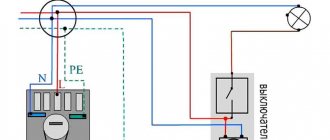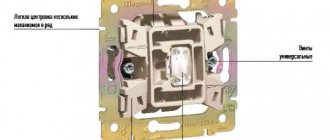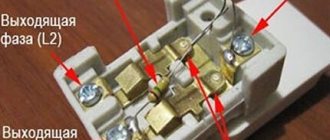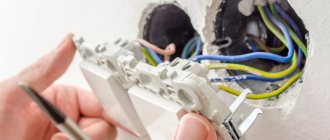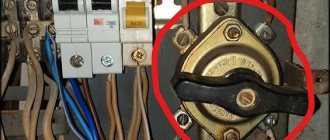Electrical installation products are used by consumers as functional devices and play an important role in interior design. Therefore, when developing such devices, manufacturers pay attention not only to the technical characteristics, but also to the appearance of the products, trying to ensure that the products meet the requirements of modern design. Among the world's manufacturers of electrical accessories, one of the first places is occupied by Legrand, whose products are distinguished by a variety of shapes and colors.
Popular series and classification
Legrand offers consumers a large number of different switches. All of them are divided into series, which differ from each other both in functionality and appearance. The most popular series among them are:
- Valena and Valena Life are one- and two-key switches and switches of a classic (square) shape, made in the colors “aluminium”, “white”, “ivory”. Some models are equipped with backlighting. Products from the Valena Life series are distinguished by the gracefully curved shape of the keys, which allows you to turn on the light with a light touch of your finger.
- Galea Life - waterproof models included in this series of one- and two-key products, are distinguished by a strict design and original colors (dark bronze, titanium, mother-of-pearl, etc.). Many of them are equipped with backlight or indication.
All Legrand switches and switches are classified according to their functional purpose, type of installation and control method.
Based on their functional purpose, the following groups of products are distinguished:
- Switches are devices equipped with one or more pairs of contacts. When on, these contacts are closed (lighting is activated), and when off, they are open (lighting is off). As a rule, switches open only the contacts to which the phase wires are connected, but there are also two-pole options - in which the contacts also break the neutral (“zero”) wire.
- Switches are devices that use three or more contacts. In the “On” position, the first and second contacts close together, and in the “Off” position – the first and third. Switches equipped with three contacts are sometimes called "dual-way switches." They are usually used in cases where lighting is controlled from two places.
- Cross switches are devices that switch two separate lines crosswise (when switching, phase and “zero” change places). Such switches are also called “intermediate” - in lighting control circuits they are installed between switches in two directions, which allows you to turn on light sources from three or more places.
- Circuit breakers are devices designed to protect light sources from overvoltage or short circuit.
Based on the type of installation, switches/switches are divided into surface-mounted and built-in.
- Invoices are used with open wiring.
- Built-in ones are designed for use when laying electrical wires hidden. Unlike overhead models, their actuator is hidden in a specially made recess on the wall surface.
According to the control method, switches/switches are:
- push-button;
- sensory;
- keyboards;
- responsive to people's movements.
The introduction of innovative technologies allowed Legrand developers to create actuators:
- activated by a light touch of the hand (touch type models);
- activating lighting when it appears and turning it off when there are no people in the room (devices equipped with infrared sensors).
Models with push-button control, which appeared relatively recently, are easy to use and can bring a certain originality and elegance to the interior of the room. However, their use will require some time for the user to get used to it.
Installing a Legrand switch: what's the difference?
The switch makes three contacts, not two. It is always in a working state: as soon as one circuit opens, another closes. It is chosen if you need to control the lighting from two places.
The difference is that for correct operation, you need not one, but two copies. The connection diagram is as follows:
Video on how to install Legrand Valena switches:
What types of Legrand switches exist?
Based on the type of installation, these devices are divided into:
- Invoices. They are installed with the wiring open. These are the Quteo, Oteo, etc. series.
- Built-in. These devices are distinguished by a mechanism recessed into the wall surface and are used with appropriate wiring (hidden). At the moment, this is the main type of switches used in residential and office premises.
By type of on/off they can be:
- Keyboards. This is the most common type of switch. Today, they are equipped with a larger number of lighting systems in living rooms and office spaces. Moreover, devices consisting of two or more keys can control entire groups of lighting fixtures. At Legrand, such switches are presented in almost every series (Cariva, Quteo, Anam, Galea Life, etc.).
- Sensory. These are devices that use innovative technologies to control lighting. They work with a simple touch, and sometimes to turn on the light you just need to move your hand next to them (Celiane series, etc.).
- Equipped with IR sensors. Such switches have built-in devices that respond to movements and activate the lighting at the moment a person appears, and, accordingly, turn it off in the absence of people. Such devices are available in the Valena series and others.
- Push-button. These devices that control room lighting have not been used for very long, so they bring originality and freshness to every interior. They are quite convenient to use, but require some time to get used to (Celiane series, etc.).
Advantages
So, we have looked at the design features of the device for turning on lights from Legrand and now we can note what advantages they have. These advantages are:
- ease of use and installation;
- availability of additional functions;
- environmental friendliness;
- reliability;
- wide choice of external design.
As for the cons, the price is a little high for most models. However, it is quite justified, since it corresponds to the quality.
In the future, we will focus on the series of switches that are produced within the walls of the Legrand organization. So, she releases the following series:
Design and principle of operation of a two-key switch
The operating principle of changeover contacts is the same as on a single-key device. Is it possible to use two single-key switches instead of a two-key pass-through switch? Namely: two more wires appear so that when the light is turned off, a red indicator on each of the two keys lights up - this makes it easier to find the switch in the dark. Six wires are suitable for the first switch, but 5 are connected, one can be left as a backup
In this case, it is important to strictly observe the connection diagram and follow the described algorithm of actions. Thus, switching any key opens one circuit and closes another. We connect the control wires from the hood and the lamp to the outputs of the switching mechanism; the order of connection does not matter. We offer you a short video on connecting a switch with two buttons: Summary or why it is better to be at least a little electrician Every self-respecting housekeeper should know basic diagrams for connecting an outlet or switch
How to connect two-key switches Let's consider the connection using the example of a two-section lighting device, the diagram is shown in Figure 4. To the distribution box from the switchboard, the wire is installed with a large cross-section, taking into account the total power of the two lighting groups. Mechanical keys are more familiar to humans and allow you to tactilely feel the change in the position of the toggle switch. These documents establish the marking of wires by color, the color of the insulation corresponds to the functional purpose of the wires: Blue, cyan color is used as a neutral conductor; Yellow-green for grounding; Red, white, black, other colors for the phase wire and its switched sections. This rule applies to the lead-in section, from the control panel to the switch terminals 1 and 2 red wire.
Choose terminal switches rather than those with screw-in screws, as the first connection option is stronger and more durable: the screws will need to be tightened after a while. Because of this, home wiring predominantly uses two or three pass-through switches per luminaire.
The result of successful work will be money saved on electricity and the comfort of residents when regulating lighting. At the end, you need to use a multimeter to check the functionality of all elements of the system.
Although, if we are based on the total number of terminals, of which there are still 6, such a two-key switch must be connected according to the diagram already shown above. Before starting work, disassemble the switch and remove the external keys from it. In this article we will look at various options for connecting pass-through switches to control lighting from 2, 3 or more places. You can make a pair or a whole group of switches, but each added device will significantly complicate the overall circuit. Do not carry out any work on electrical wiring connected to the network! Two-key pass-through switches from 2 places. Connection diagram
Types of crossover and pass-through switches
Let's take a closer look at the subject of our interest. First, we will study the existing options, and then we will learn how to connect them to electrical wiring.
In appearance, changeover switches vary in color and shape, and they also come in:
- hidden or open installation;
- single-key, two-key, three-key;
- with or without backlight;
- a special character on the keys may or may not be present.
Considering the internal diagram, we can talk about the following types:
- Single-key pass-through switch. It is most often used as the first and last device in the case of 2 or more control points.
- Pass-through switch with two keys. A double device is used for the same purpose to control lighting using 2 groups of lamps.
- 3-key pass-through switch. Used for the same purpose to control three groups of lamps.
- Single-key cross or toggle switch. Used as an intermediate device in a chain of three or more locations.
- Two-key cross switch. Used as a middle device in a chain of 3, 4 or more control points for two groups of luminaires.
As follows from the illustration above, in a pass-through switch, the input terminal is connected to one of the output terminals when the key is pressed. In crossover - the conductors connected to the input and output change places when the position of the key changes.
There's no point in worrying about internal circuit diversity at this point. Firstly, most often only a single pass-through switch is in demand. Secondly, something else may be required, and this will become clear from the specific options for connecting devices.
The photo shows a rear view of the wiring accessories. Now you can choose and purchase the right model yourself. Unfortunately, not all manufacturers indicate the contact markings on the device body. If it is missing, you will have to use a multimeter to determine the placement of the product terminals.
Two-key switch: connection diagram
Thus, we found out that these Legrand transition devices have 2 groups of contacts - right and left. Knowing this, it is easier to understand how to connect a two-key pass-through device.
According to the diagram, the second contact of the right switch is supplied with the phase coming out of the distribution box of the house. The contacts within this group are connected to each other using a jumper; the same ones that belong to the left group provide current supply to two lamps independent of each other. The important point here is that these two pins should not interact with each other. Next, these four cross contacts must be connected to each other as a pair.
Why do energy-saving lamps flicker when connected to backlit switches?
The backlight lamps are connected in series with the load, so a small current from the backlight lamp also flows through the energy-saving lamp, causing it to turn on periodically. When a backlit switch (switch) and a compact fluorescent lamp work together, a problem arises that manifests itself in its periodic flashing when turned off. This is because the current flowing through the backlight element (neon lamp or LED) charges the capacitor and causes the lamp converter to spontaneously cycle. This problem can be solved using switches art. 067001 and backlight lamp art. 067686 (Celiane series), connected according to the diagram shown.
Popular series and classification
Legrand Valena Life
Legrand offers consumers a large number of different switches. All of them are divided into series, which differ from each other both in functionality and appearance. The most popular series among them are:
Valena and Valena Life are one- and two-key switches and switches of a classic (square) shape, made in the colors “aluminium”, “white”, “ivory”. Some models are equipped with backlighting. Products from the Valena Life series are distinguished by the gracefully curved shape of the keys, which allows you to turn on the light with a light touch of your finger.
Galea Life - waterproof models included in this series of one- and two-key products, are distinguished by a strict design and original colors (dark bronze, titanium, mother-of-pearl, etc.). Many of them are equipped with backlight or indication.
GeaLine is a series of exquisite models of an expanded range (premium class). They are produced in the colors “white graphite”, “ivory”, “titanium” and are characterized by an original combination of square frames and rounded keys
What also attracts attention is the fact that genuine leather, porcelain, wood and glass are used for decoration. Quteo – a series of one- and two-key switches and switches designed for external installation on a wall surface (overhead). Impact-resistant ABS plastic is used to make their body. Plexo - a series of waterproof one- and two-key overhead models
They are installed in utility rooms (garage, basement, etc.) with high humidity (protection class IP55 or IP66).
Cariva is a series of inexpensive one- and two-key models designed for installation in offices and residential premises. Some of them are equipped with backlight. Waterproof versions are also available. Etika is a series of economical switches, the external parts of which are made of plastic. Available in one- or two-key versions. Their distinctive feature is the absence of a terminal block - the wires are fixed using a special nut.
All Legrand switches and switches are classified according to their functional purpose, type of installation and control method.
Switches Legrand
Based on their functional purpose, the following groups of products are distinguished:
- Switches are devices equipped with one or more pairs of contacts. When on, these contacts are closed (lighting is activated), and when off, they are open (lighting is off). As a rule, switches open only the contacts to which the phase wires are connected, but there are also two-pole options - in which the contacts also break the neutral (“zero”) wire.
- Switches are devices that use three or more contacts. In the “On” position, the first and second contacts close together, and in the “Off” position – the first and third. Switches equipped with three contacts are sometimes called "dual-way switches." They are usually used in cases where lighting is controlled from two places.
- Cross switches are devices that switch two separate lines crosswise (when switching, phase and “zero” change places). Such switches are also called “intermediate” - in lighting control circuits they are installed between switches in two directions, which allows you to turn on light sources from three or more places.
- Circuit breakers are devices designed to protect light sources from overvoltage or short circuit.
Legrand series for surface installation
Based on the type of installation, switches/switches are divided into surface-mounted and built-in.
- Invoices are used with open wiring.
- Built-in ones are designed for use when laying electrical wires hidden. Unlike overhead models, their actuator is hidden in a specially made recess on the wall surface.
According to the control method, switches/switches are:
- push-button;
- sensory;
- keyboards;
- responsive to people's movements.
Legrand Celiane touch
The introduction of innovative technologies allowed Legrand developers to create actuators:
- activated by a light touch of the hand (touch type models);
- activating lighting when it appears and turning it off when there are no people in the room (devices equipped with infrared sensors).
Models with push-button control, which appeared relatively recently, are easy to use and can bring a certain originality and elegance to the interior of the room. However, their use will require some time for the user to get used to it.
Features and advantages of Legrand electrical accessories
Legrand electrical accessories have a high level of electrical safety.
Electrical installation products produced by Legrand are in steady demand all over the world. They differ from existing analogues in high quality manufacturing, advanced functionality, ease of installation and ease of operation. A distinctive feature of this brand is also its stylish and elegant design. At the same time, without exception, all electrical installation products produced at the company’s enterprises have a high level of:
- electrical safety;
- fault tolerance;
- fire resistance;
- energy saving.
In Russia, the Legrand company offers consumers electrical accessories that can easily give office and residential premises a modern and attractive look. For their production, only high-quality materials are used (porcelain, metal, glass, plastic, etc.) with a wide range of colors, which allows you to select the necessary installation products for the interior of any room.
Video
This video shows how to remove a socket from the wall in order to better secure it in the socket box:
Usually, disassembling a light switch in an apartment is required when it breaks, that is, to replace it with a new one. Some manufacturers, in order to improve the decorative effect of the element, make the holes for dismantling invisible, these are mainly brands: Legrand, Schneider, Viko. Because of this, a person who decides to do repairs may accidentally damage the case or spend a long time looking for clamps and connectors. The article will provide detailed instructions for removing the switch and socket.
Flaws
Such switches also have a number of disadvantages that must be taken into account during installation.
Let's highlight the main ones:
- If you don't know the main differences, they can easily be confused with a regular switch.
- There is no precise position to detect the position (on, off). For example, when replacing a light bulb, it is difficult to understand whether the power supply to the device is suitable or not. For safety, it is recommended to turn off the power supply.
- There are many wires appearing in the junction box. Their number increases with the number of light bulbs. It is not advisable to connect devices directly, because in this case you will have to endure high costs. In addition, with a large number of lamps in one circuit, the use of pulse relays is provided.
- Higher price due to design features.
How to connect a Legrand two-key switch
The design of devices with two keys is, in fact, two single models enclosed in one housing. When the user presses the button, the circuit is broken
It is important that there is a break in the phase wire that is connected to a specific lamp. When connected correctly, the neutral and protective conductors are connected directly to the lamps, and the phase passes through the switch itself
The figure shows how to connect a Legrand switch with two keys:
How to connect a Legrand pass-through switch with one key
Devices of this type are used when you need to regulate light from different places. For example, turn on the lights when you are at the beginning of a long corridor, and turn them off at the end. It is logical that in this case the installation of two devices is required.
Pass-through products work together. They have a contact at the entry point, and a pair at the exit point. In addition, unlike traditional models, they have three contacts, and the phase switches from the first to the second.
When installing, keep in mind that, unlike conventional devices, three wires will be used at once, not two. One is needed to supply a phase, and the remaining two act as a jumper between electrical equipment.
The answer to the question of how to connect Legrand switches looks schematically like this:
Legrand company
Legrand Etika switch with 3 keys
The international company Legrand, whose headquarters is located in Limoges (France), was founded in 1866 and was initially engaged in the production of table porcelain. However, the company subsequently switched to the production of porcelain insulators (1904), and then focused on the production of electrical accessories (1949). Since then, continuously developing, the small enterprise has turned into a large international company with branches located in more than 60 countries around the world. Its enterprises produce a wide range of electrical products, from sockets to the creation of complex technical solutions for electrical and information networks.
Legrand is the only company that offers Russian enterprises and trade organizations a full range of electrical equipment developed taking into account the latest scientific and technical achievements and meeting the requirements of international standards.
Legrand products are fully certified for compliance with regulatory and technical documentation in force in Russia.
Operation of the circuit with 3 types of switches - regular, through and cross
The cross switch is used in light control systems with 3 or more places. The device is so called because when switching, it swaps the connections of the suitable wires to the outgoing wires - in a crisscross pattern.
Look at the diagram in the picture
light control using pass-through and cross switches. In a conventional device, there are two contacts for controlling light from one place. Closing and opening them turns the lamp on and off. Therefore, the control key has the “on” and “off” positions marked with letters or icons, and two wires are connected to the device - one phase, from the network and the second from the lamp.
The system for controlling light from several places is designed differently. The device has three contacts - 2 fixed ones, to which the outgoing wires connecting the switches are connected, and 1 movable one. A wire going to the phase or lamp is connected to it. The on position of the circuit is when both devices are connected to the same wire, so there is no “on” position on the keys.
Lighting control circuit from three places
The connection diagram for two-key devices consists of two parallel circuits, one for each lamp. They are connected only by connecting a suitable wire on the first pass-through switch.
Connection diagram for two-button switches
Design, principle of operation and purpose
To connect a pass-through switch yourself, you need to understand how it works. Externally, it is practically no different from the usual one, the main difference lies in the internal design. A standard switch closes/opens an electrical circuit, a pass-through switch that disconnects one line and connects another.
So, if an ordinary single-key player uses only two contacts, then a pass-through one has three. That is, the second output contact is connected to a paired switch. If you connect a two-key device, there will already be six contacts.
Connection diagram for a pass-through single-key switch Legrand
Connection diagram for a two-key device from Legrand
The main purpose of pass-through switches is to control one light source from different sides of the room. It will be easiest to understand the principle of operation using the following examples:
- Long passage corridor. Often in room layouts you can find rooms of considerable length or area with two passages. When you enter from one side, you press the switch, but when you reach the opposite end, it is already inconvenient to return to turn off the light. Therefore, a parallel switch is installed on the other side, with which you successfully turn off the lighting.
- Flights of stairs or different floors. In large houses, with long staircases and several floors, it is quite convenient to turn on the light, for example, on the first floor, and after going up the stairs, turn it off on the second or third.
- Rooms. Imagine that you lay down on the bed and decided to take a nap, but to turn off the light you need to get up and go to the switch. So you can interrupt your sleep. What if you run a parallel switch somewhere to the headboard, then you can turn off the lighting without getting up and relax peacefully.
As you can see, pass-through switches significantly increase the comfort of residents, allowing them to avoid unnecessary movements.
How to connect a switch
Below we have presented a diagram of the operation of the switch and its installation. A two-key Euro switch is two single devices, but in one housing. Their phases are combined, and at the moment when one bridges its contacts (and it begins to supply power to its group of devices), the second breaks the circuit and stops receiving signals from the phase cable from the outlet or wiring in the apartment. This happens because the ground wire and phase neutral are connected directly to the lamp, and the phase passes through the switch.
Connection diagram for a two-key switch to a chandelier
To work you will need:
- Pliers;
- Screwdrivers (indicator, flat and Phillips);
- Stationery knife;
- Level.
First we turn off the electricity. Next, you need to prepare the wires in the installation box; to do this, we clean them with pliers. It is necessary to leave approximately 10 centimeters of wire; cut off the excess with a stationery knife. Now you can connect the wiring and switch wires. If the wiring is three-phase, then this process will not be particularly difficult.6 We simply connect the cables corresponding in color to 3 phases and zero.
Double switch
If the wiring is two-phase, then you need to fasten the wires of the switch with a terminal, and eventually getting two jokes instead of three, connect them to the power supply of the electrical network.
Install the protection plates and turn on the power. Ideally, both switches should be in the up or down position when the light is off. If necessary, remove the second electrical switch, rotate it 180 degrees in the box, then set it as two toggle positions.
Video: How to connect a two-key switch
Connecting a chandelier is also no more difficult. Certain lamps are combined into groups, and if there can be only two groups, then there can be any number of lamps: with two arms, five or even six.
Lezard switches: consumer opinion
Reviews about devices from this manufacturer, as already mentioned, are relatively good online. The advantages of products supplied to the market by Dernek GROUP include, first of all, its wide range. The advantages of the Lezard brand sockets and switches themselves are:
- stylish appearance;
- reliability and long service life.
In terms of build quality, most home craftsmen compare the products of this company to similar products made in China.
The disadvantages of devices from this manufacturer include, first of all, the fact that rather thin plastic is often used to assemble their cases. Equipment of this brand must be handled carefully during installation and operation.
Another disadvantage of Lezard sockets is that the contacts in them are secured with screws. The wire in such structures can, unfortunately, be pinched literally to the point of breaking off. Some batches of products supplied by Dernek GROUP may sometimes contain non-working defects.
Connection diagram for a two-key switch and its features
Wiring diagrams for a light switch with two keys are a little more complicated, but still easy to understand even for a person far from physics. So, you have two keys in front of you. Left and right. The left one can turn light bulbs on and off, and the right one can do the same with another group of light bulbs. And if they work together, then all the lights in the chandelier turn on and off.
Standard models of such switches can serve lighting fixtures with a power of up to 1000 watts. But keep in mind that a simple switch does not have a short circuit protection device. Do not connect more powerful lighting devices to it
Double switches come in several types:
| View | Description |
| Indoor installation | To install it, you will have to ditch the walls. The wiring is laid in channels and covered with plaster, and the switch itself must be recessed into the wall. Such devices look neat and do not spoil the appearance of the interior. |
| Outdoor mounting | Installing such a device is as easy as shelling pears. It is mounted directly on the wall surface, and the supply wires are hidden in cable channels. Not very aesthetically pleasing, but easy. |
| Protected from moisture | Switches protected from high humidity are very useful in the kitchen and in rooms where temperature changes are often observed and, as a result, condensation occurs. |
| Modular | This concept includes devices with a built-in socket, they are convenient for connecting a floor lamp or sconce, and devices with light indication. When turned off, the switch is illuminated by an LED, and you don’t have to look for it for a long time in a dark room. |
And now directly about the scheme. Modern wiring is all grounded, so when working you will encounter not two, but three wires. One of them is phase, the second is zero, the third is grounding. The difference between a single-key device and a two-key device is only in the adapters, which allow you to supply current to one or the second connection or simultaneously to both. As with the single-key version, it should be remembered that the dynamic element only breaks the phase.
Diagram of a 2-push-button switch with grounding
Diagram of a 2-push-button switch without grounding
Recommendations for connecting a two-button switch to two light bulbs
If a TN-C system is installed in your house, then you will be faced with only two wires - phase and neutral. As a rule, they are placed in shells of red (phase) and blue (zero) colors.
The phase is connected to the contact point marked as L or 1 (the marking is set by the manufacturer. Groups of light sources are connected to L1 and L2, respectively. The zero line is also connected to the corresponding contacts of the wiring from the lamps using terminals. But the zero is not disconnected by the dynamic element, it is only disconnected phase.
Connecting to contacts in the absence of a ground line
Connection diagram for double switches for two light bulbs to the TN-C system. If we are dealing with a TN-S system that has three wires - phase (red), neutral (blue) and ground (yellow-brown), then we should take into account that the switch has a special contact for grounding and it is indicated by the following icon:
Pay attention to the ground connection in the diagram:
Connection diagram of the switch to the TN-S system
Diagram: how to connect a chandelier to a double switch
If you are faced with the problem of how to connect a chandelier to a two-key switch, do not get lost. Count the number of wires converging at the switch location:
- 2 – from the panel (zero and phase);
- 3 – per switch (one phase on the approach and 2 – on the output);
- 3 – for the chandelier (one for zero and two phases).
The total should be eight.
Connection diagram for a chandelier to a double switch:
This diagram is for a situation where you have one chandelier with two groups of lighting fixtures. But if there are two chandeliers in different places, for example, a toilet and a bathroom, then 4 wires will come out of the switch - a neutral and a phase for each lamp.
Connecting a two-key switch with a socket, highlights
As we have already said, switches are modular, combined with a socket. It is convenient to install one near the sofa and use it to control the floor lamp and at the same time connect a laptop or charge a phone.
Here is a sample connection diagram for a two-key switch and socket:
You can see that there are five wires coming from the junction box. In this case, the zero and ground electrode are connected to the socket. The phase first goes into the socket, and then a jumper goes from it to the switch. The phase passes through the switch switch and is distributed to groups of luminaires. Zero is also directed to the group of lamps, but not from the switch and socket, but directly from the box. The twists in the box are protected with electrical tape or the same terminals are used.
Peculiarities
Let's take a closer look at what each switch from this company can boast of. To do this, you should consider the structure of this equipment. Like all switches, the Legrand product includes such elements as:
- The base on which all the parts are located and thanks to which they are attached to the wall or mounting box.
- Contacts and keys.
- Frame.
- Frame.
- Terminal blocks.
In order for the switch to be securely attached to the wall, the manufacturer makes its base from galvanized steel. The peculiarity of this base is that it is not deformable and has four special elongated holes for fastening. Fastening is carried out using screws. The shape of these holes makes it possible to adjust the position of the switch itself. That is, it can be tilted in different directions and centered.
This is very convenient when leveling it. Thanks to this base, the Legrand switch, which can be sold with a remote control, can be installed in any installation box. Depending on the model, the metal base may have some cutouts.
The main mechanism, the body of which is made of high-strength plastic, is attached to this plate. This plastic is polycarbonate. It is also used to create frames and keys.
A feature of most switches from this company is that the frames and key covers can be easily removed. To do this, the Legrand organization makes small grooves in them. A screwdriver is inserted into these grooves and used to remove the frame and key cover.
Helpful hint: mechanisms of the same series are the same and as a result, frames and keycaps with different colors can be used for the same mechanism.
This makes it possible not only to select the desired color at the connection stage, but also to change the color, as well as the appearance of the Legrand switch after a certain period of time.
Some series of switches provide for the use of frames that are made of porcelain, wood, and also covered with leather. As for the contacts, they are made of an element such as ArNi.
The advantage of this is that they do not contain cadmium. This element is known to cause contamination of contacts. As a result, their resistance increases and they begin to burn. Due to the absence of cadmium, Legrand switches are safer and last much longer.
We all clearly know that wires are connected to the switch. To make this connection very simple and, most importantly, reliable, the equipment is equipped with automatic terminals. All you have to do is strip the wire and insert it into these terminals.
It is noteworthy that in many models the terminals are placed at an angle of 35 degrees. And this simplifies the process of connecting wires. The terminals are quite durable and are designed for those copper and aluminum wires, the cross-section of which ranges from 1.5-4 square meters. millimeter.
Reverse side of the switch
It is worth noting that the professionalism of Legrand specialists did not stop there. On the back of the case they drew a special marker, which has a certain length and indicates how many millimeters of wire insulation need to be removed in order to make a quality connection.
In addition to the above-mentioned marker, Legrand specialists also put a connection diagram on the back of the switch, which also explains the principle of operation. Of course, this greatly simplifies the process of connecting the necessary wires.
Apparently, by applying such markings, the company takes care of those people who want to purchase, but do not know how to correctly install the Legrand switch; how to connect it is also a question to which they do not have an answer.
Another feature of many switch models from Legrand is that they can be equipped with a protection cover, backlight, dimmer, motion sensor, and also a microcircuit that can analyze remote control commands.
If we talk about backlighting, it is done using LEDs. They are very easy to replace. To do this, simply remove the key cover, pull out the unusable LED and insert a new one.
All the company's products are divided into series, they combine both one- and two-key switches. At the same time, many series have pass-through switches.
How do dimmer buttons work?
Buttons on scenario-type dimmers open/close a circuit (electrical), and also reduce or increase the intensity and brightness of the lighting. These actions are performed by pressing them appropriately, in addition, the lighting in devices such as Legrand Celiane In-One (art. 067214) can also be controlled from the remote control.
How to connect backlit switches Legrand Etika 672403, 672203, 672303, 672603
look at the diagrams below.
Legrand Etika switch connection diagram in indication mode
(the lamp in the switch glows to indicate that the load is on).
Wiring diagram for Legrand Etika switch in night lighting mode
(the light in the switch helps to find the switch in the dark).
But first, we will provide diagrams that will help the customer (the owner of the house) understand the essence of the issue, and understand where, why and how he needs to install such switches.
Connections of “through” and “cross” switches are very simple, unless, of course, the “electrician” knows what “zero” and “phase” are.
An additional "crossover" switch is used.
Connection diagram for a pass-through switch for four or more control points:
This scheme differs from the previous one only in the number of control points.
Everything is very simple. You will have to run an additional cable between the switches.
Legrand switches connection diagrams
Switch 774301 (774401)
Illuminated switch 774310 (774410)
Double pole switch 774302 (774402)
Double switch 774305 (774405)
Control from 2 places (switch for 2 directions 774306 (774406))
Control from 2 places (2-way switch with backlight 774326 (774426))
Control from 2 places (2-way switch with indication 774325 (774425))
Control from 2 places of two groups of lamps (double switch for 2 directions 774308 (774408))
Control from three places (2 switches for 2 directions and an intermediate switch 7743 06+7743 07+7743 06 (7744 06+7744 07+7744 06))
Switch for controlling blinds 7743 04 (7744 04)
Push-button switch for controlling blinds 7743 14 (7744 14)
Information about the company and products sold
Legrand crossover switch Valena Life Legrand is a company from France, whose headquarters are located in the small town of Limoges. The specialists and engineers of this company have been producing electrical products for many years. In recent years alone, Legrand has significantly expanded its business through the acquisition of other companies in more than 60 countries.
Historical reference
The company's founding date is considered to be 1866, when its specialists opened the production of table porcelain. It was only in 1904 that this company was headed by Frederic Legrand, after whom it was named.
With the discovery of electricity, porcelain components began to be used to make switches and other electrical products, which began to be in great demand.
Product characteristics
Legrand Celiane Among all the diversity on the Russian market, two brands of this company stand out, which are usually considered separately. The first of these is Legrand Celiane, a branch of the company that produces premium switches. They are available in a wide range of different colors, ranging from white, graphite, titanium and all the way to ivory. These products are distinguished by their stylish design, elegant rounded shapes and the ability to fit into any modern interior.
The range of this range includes the following models:
- contactless (silent) switches;
- sensory devices;
- walk-through products;
- single-key and two-key samples;
- devices with backlight or indication.
According to their design, they can be with switches in the form of a button or with special levers. Today, these models are increasingly used as elements of a “Smart Home” and are truly unique devices that have no equal.
Products from Legrand Valena differ only slightly from the models already discussed and are also characterized by the perfection of lines and shapes. Their model range is so extensive that the most demanding buyer will be able to select electrical installation products suitable for a specific interior.
Placement - convenience and safety
Before installing the switch, you should consider the most convenient location for installation and subsequent use. The most advantageous area is located near the entrance doors (from the side of the door handle), but there may be exceptions (for example, next to the head of the bed).
Before drawing up a wiring project, it is better to look at the official document - PUE (electrical installation rules), which regulates some of the nuances of installation. For example, clause 7.1.48 states that the switch must be located at least 60 cm from the shower stall, and clause 7.1.50 allows it to be installed no closer than 50 cm from the gas pipeline.
As can be seen from the installation diagram, the distance from the doors to the installation point must be at least 10 cm, and to the floor - at least 90 cm
The installation of control devices in bathrooms and saunas is prohibited; they must be taken outside the room (usually into the corridor).
